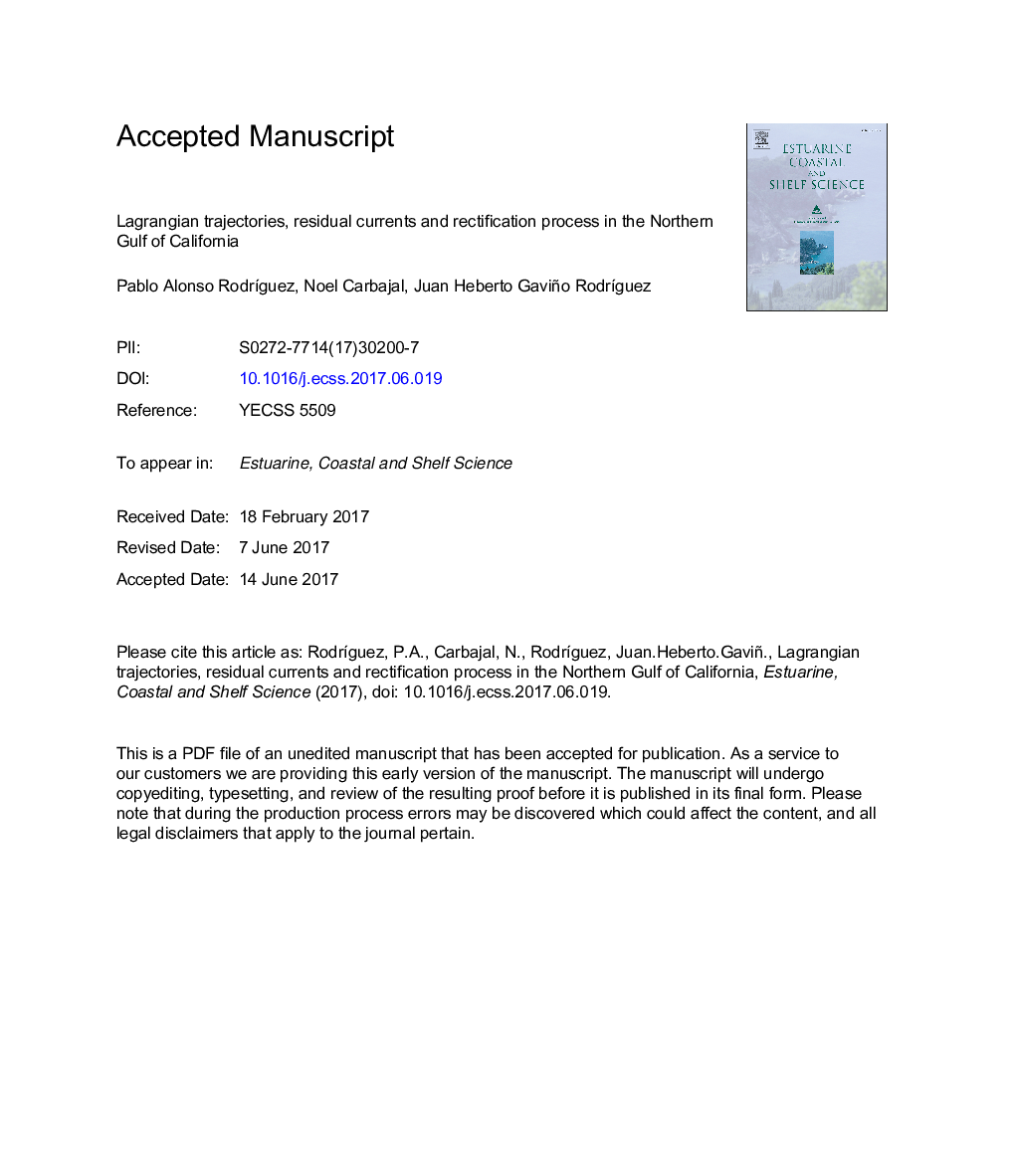| Article ID | Journal | Published Year | Pages | File Type |
|---|---|---|---|---|
| 5765104 | Estuarine, Coastal and Shelf Science | 2017 | 37 Pages |
Abstract
Considering a semi-implicit approximation of the Coriolis terms, a numerical solution of the vertically integrated equations of motion is proposed. To test the two-dimensional numerical model, several experiments for the calculation of Euler, Stokes and Lagrange residual currents in the Gulf of California were carried out. To estimate the Lagrangian residual current, trajectories of particles were also simulated. The applied tidal constituents were M2, S2, K2, N2, K1, P1 and O1. At spring tides, strong tidal velocities occur in the northern half of the gulf. In this region of complex geometry, depths change from a few meter in the northern shelf zone to more than 3000Â m in the southern part. In the archipelago region, the presence of islands alters amplitude and direction of tidal currents producing a rectification process which is reflected in a clockwise circulation around Tiburón Island in the Lagrangian residual current. The rectification process is explained by the superposition of the Euler and Stokes residual currents. Residual current patterns show several cyclonic and anticyclonic gyres in the Northern Gulf of California. Numerical experiments for individual and combinations of several tidal constituents revealed a large variability of Lagrangian trajectories.
Related Topics
Physical Sciences and Engineering
Earth and Planetary Sciences
Geology
Authors
Pablo Alonso RodrÃguez, Noel Carbajal, Juan Heberto Gaviño RodrÃguez,
